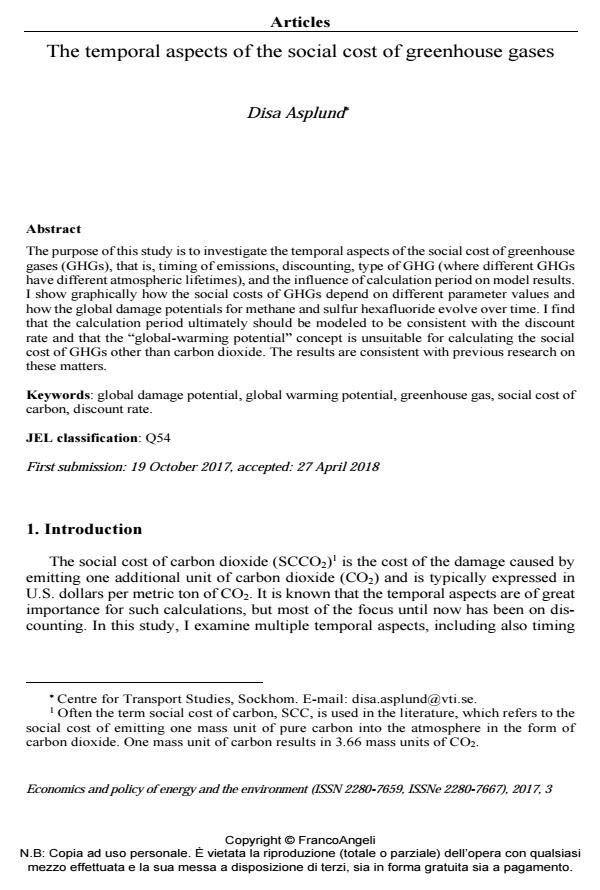The temporal aspects of the social cost of greenhouse gases
Titolo Rivista ECONOMICS AND POLICY OF ENERGY AND THE ENVIRONMENT
Autori/Curatori Disa Asplund
Anno di pubblicazione 2018 Fascicolo 2017/3
Lingua Inglese Numero pagine 15 P. 25-39 Dimensione file 317 KB
DOI 10.3280/EFE2017-003002
Il DOI è il codice a barre della proprietà intellettuale: per saperne di più
clicca qui
Qui sotto puoi vedere in anteprima la prima pagina di questo articolo.
Se questo articolo ti interessa, lo puoi acquistare (e scaricare in formato pdf) seguendo le facili indicazioni per acquistare il download credit. Acquista Download Credits per scaricare questo Articolo in formato PDF

FrancoAngeli è membro della Publishers International Linking Association, Inc (PILA)associazione indipendente e non profit per facilitare (attraverso i servizi tecnologici implementati da CrossRef.org) l’accesso degli studiosi ai contenuti digitali nelle pubblicazioni professionali e scientifiche
The purpose of this study is to investigate the temporal aspects of the social cost of greenhouse gases (GHGs), that is, timing of emissions, discounting, type of GHG (where different GHGs have different atmospheric lifetimes), and the influence of calculation period on model results. I show graphically how the social costs of GHGs depend on different parameter values and how the global damage potentials for methane and sulfur hexafluoride evolve over time. I find that the calculation period ultimately should be modeled to be consistent with the discount rate and that the "global-warming potential" concept is unsuitable for calculating the social cost of GHGs other than carbon dioxide. The results are consistent with previous research on these matters.
Parole chiave:Global damage potential, global warming potential, greenhouse gas, social cost of carbon, discount rate.
Jel codes:Q54
- 온실가스 감축을 위한 국제사회의 탄소가격제 도입과 경제영향 분석 (Global Application and Economic Analysis of Carbon Pricing for Emissions Reduction) Jin-Young Moon, Minsoo Han, Jihei Song, Eunmi Kim, in SSRN Electronic Journal /2017
DOI: 10.2139/ssrn.3299911
Disa Asplund, The temporal aspects of the social cost of greenhouse gases in "ECONOMICS AND POLICY OF ENERGY AND THE ENVIRONMENT" 3/2017, pp 25-39, DOI: 10.3280/EFE2017-003002